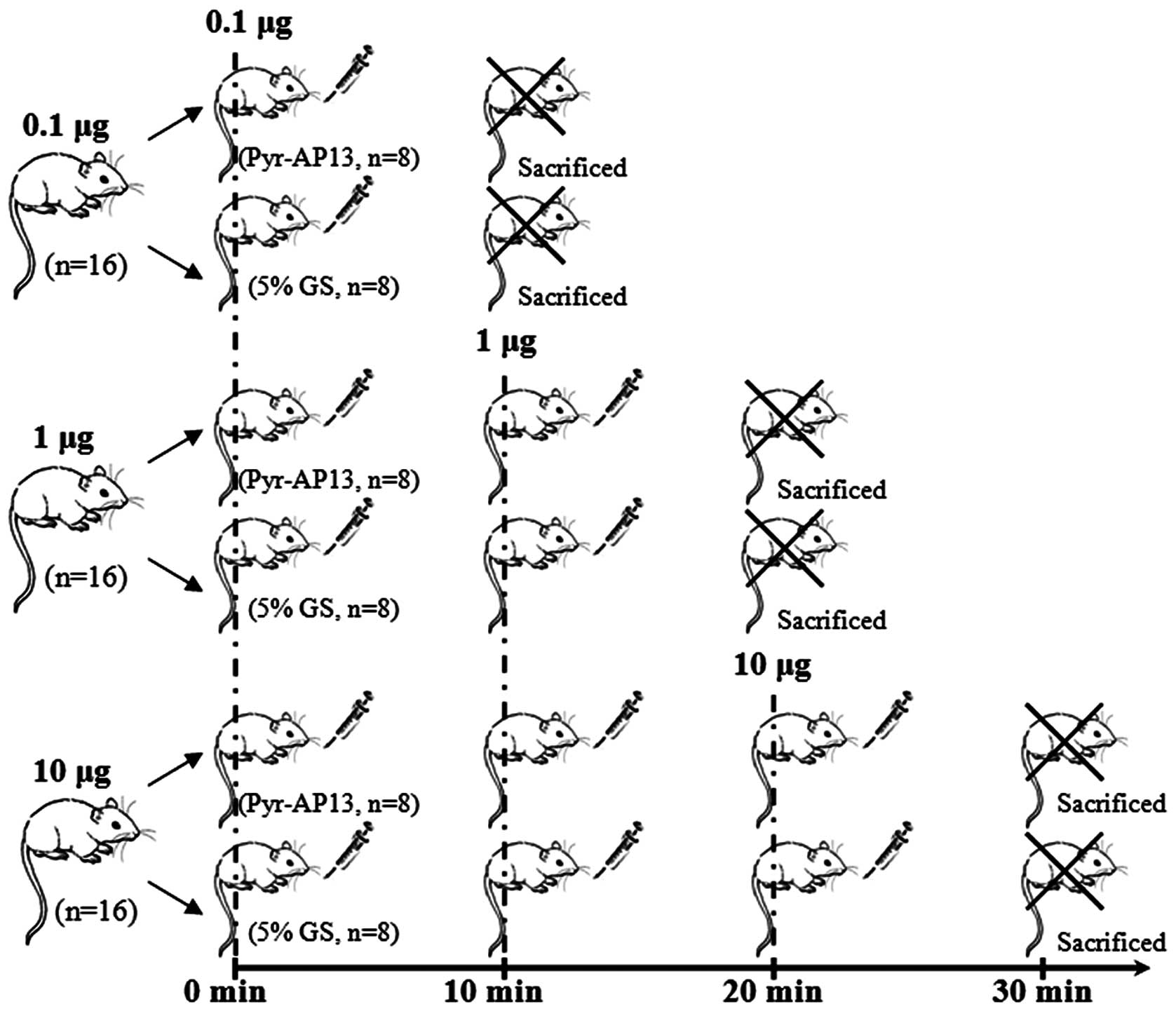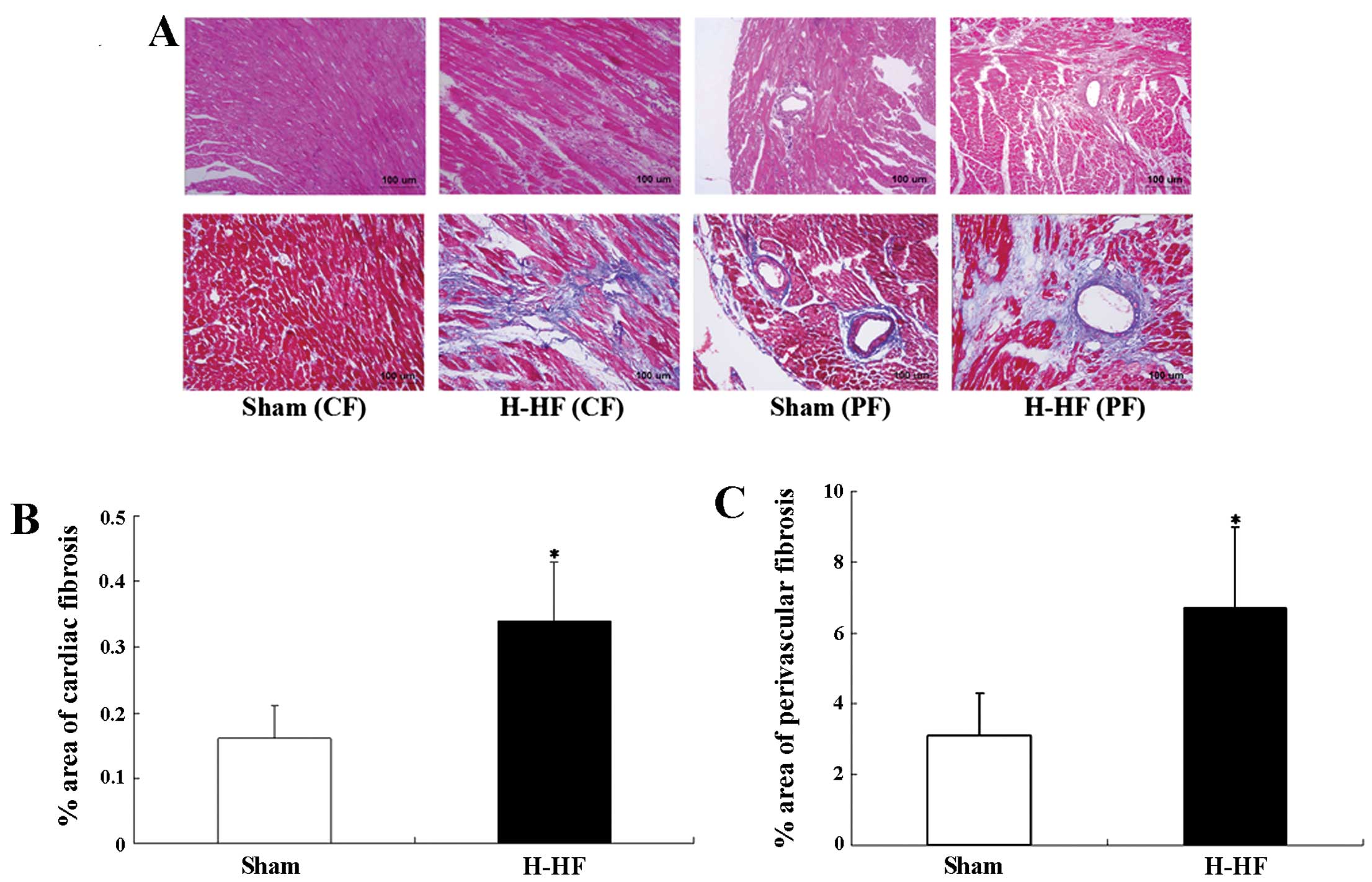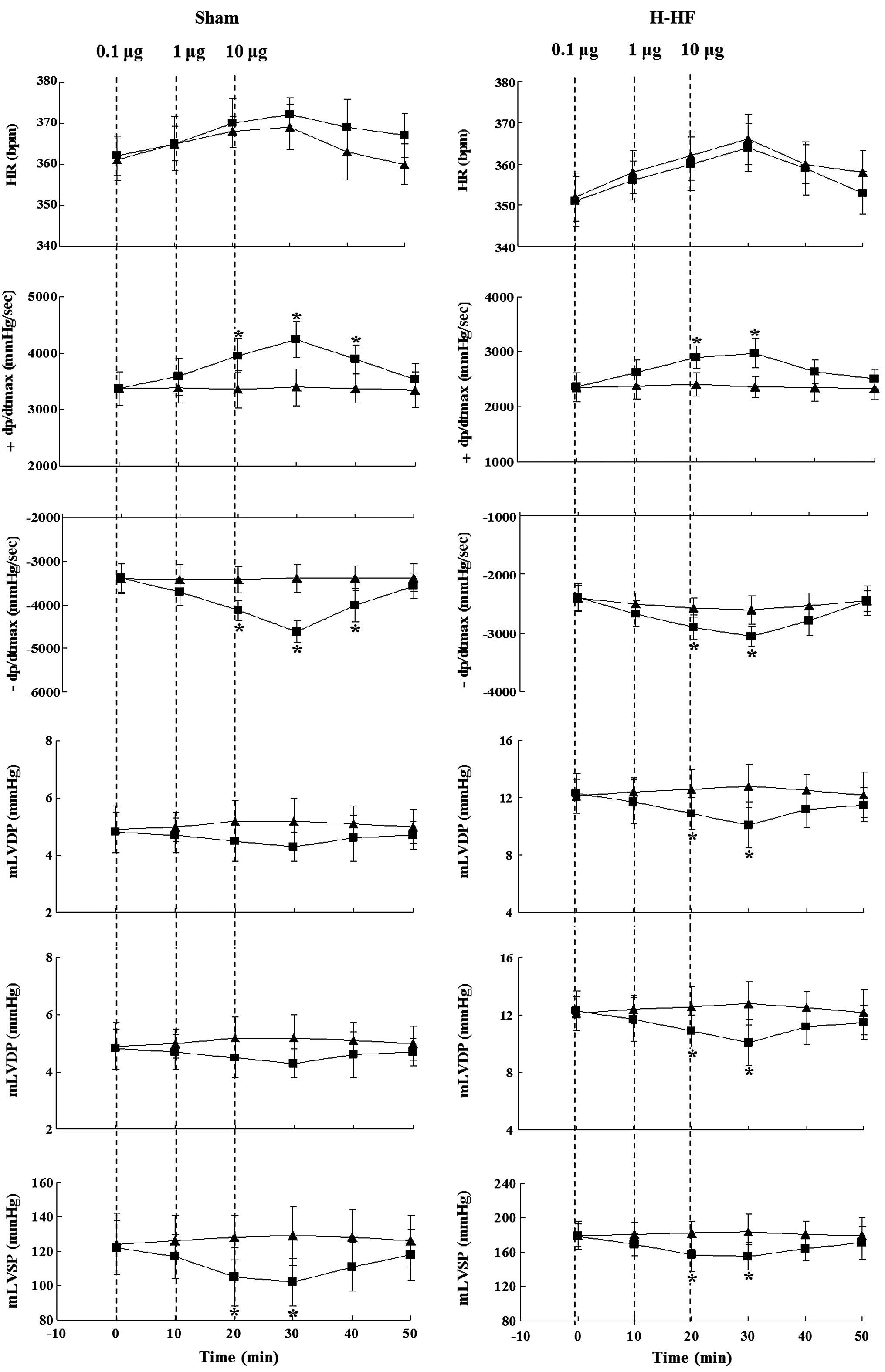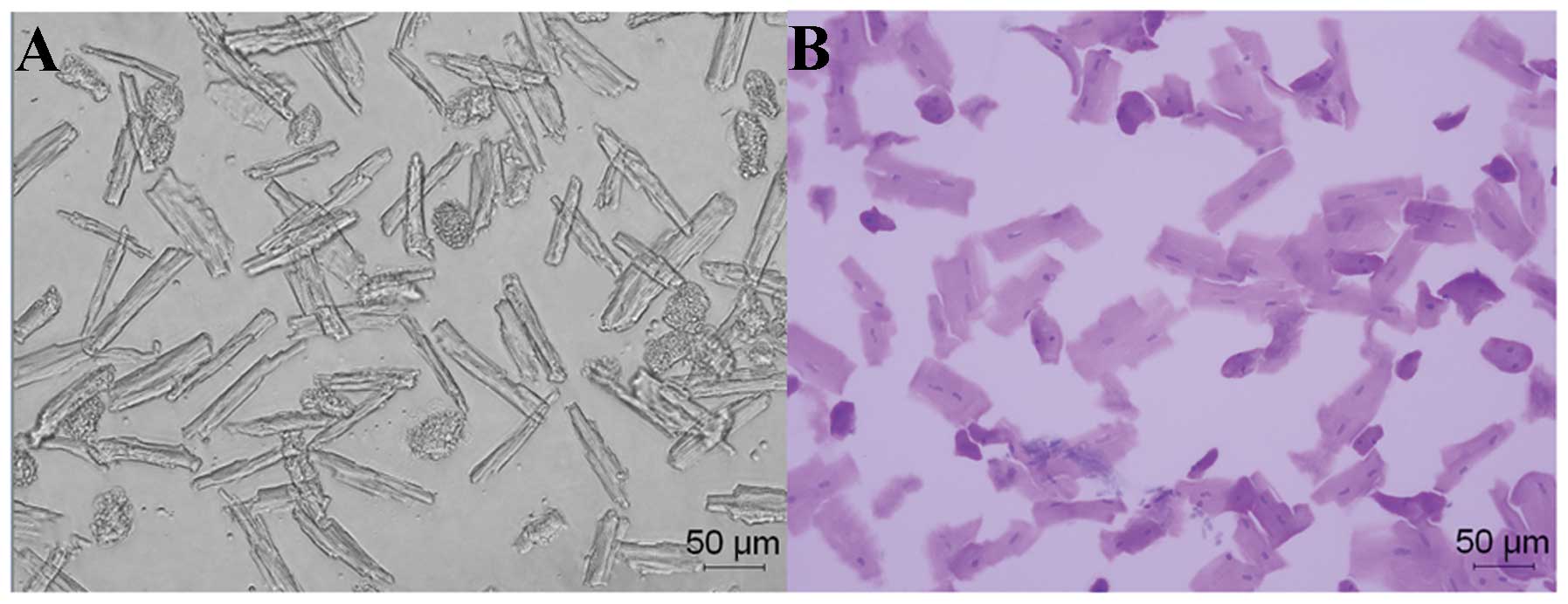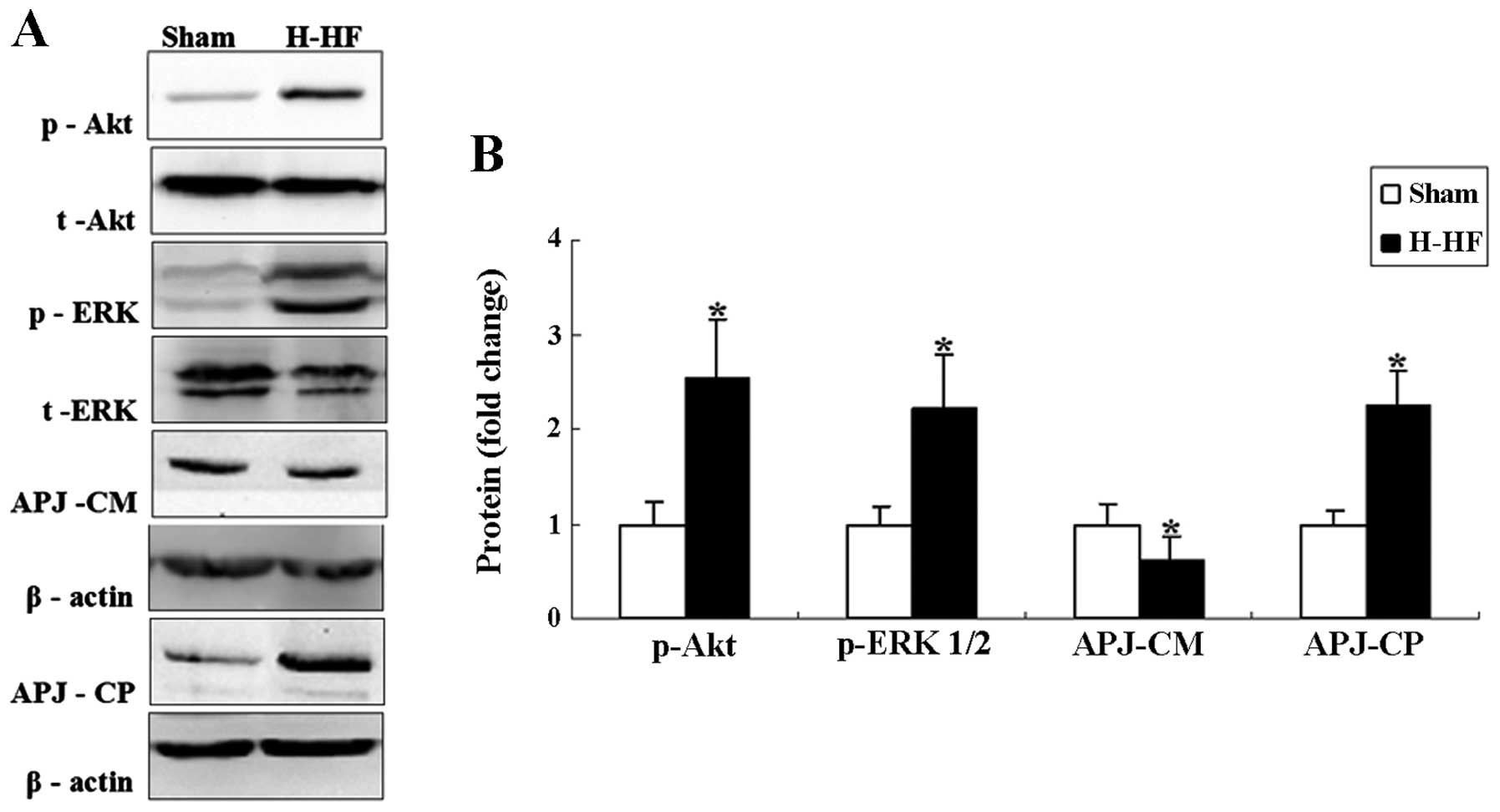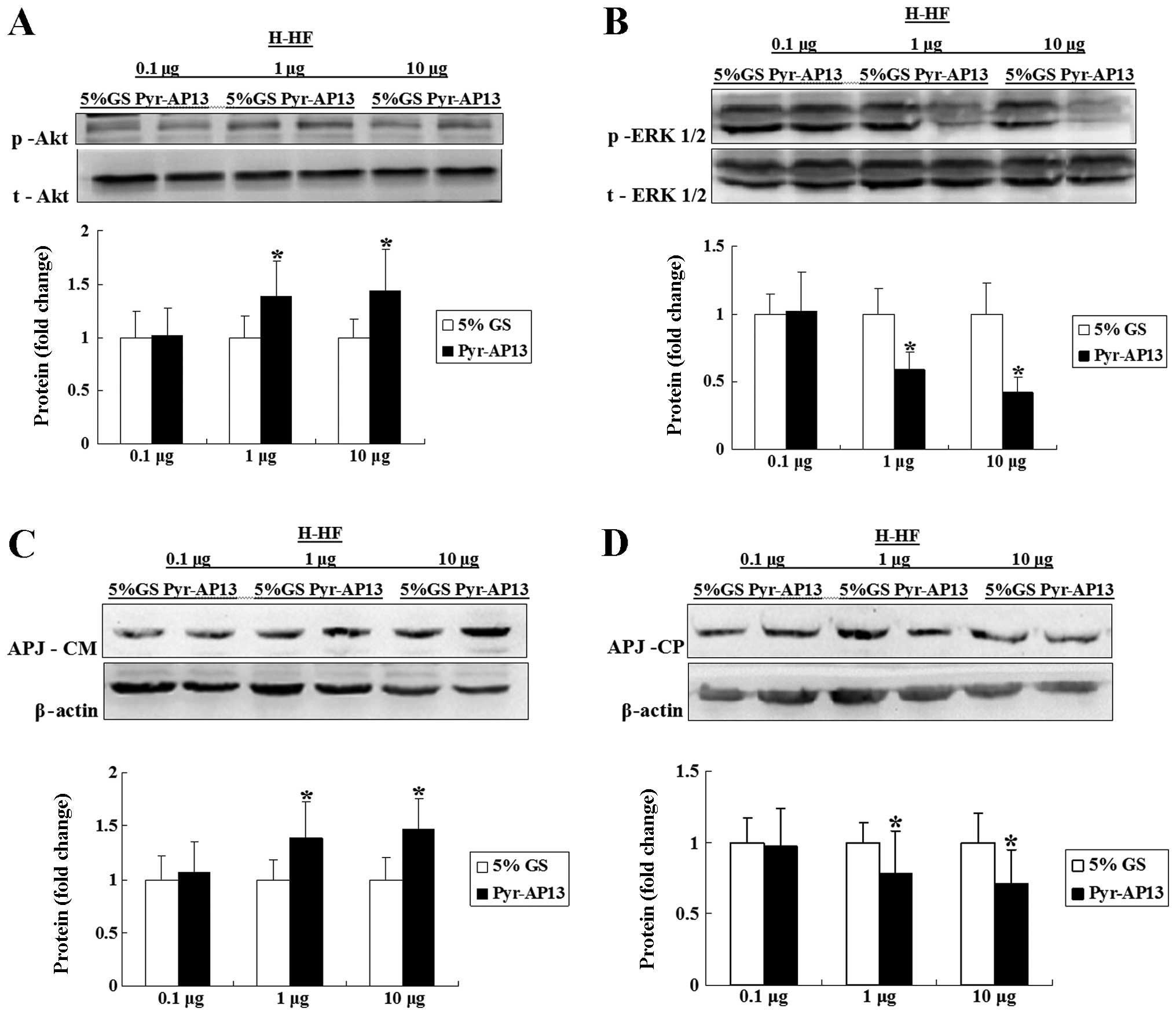|
1
|
Tatemoto K, Hosoya M, Habata Y, et al:
Isolation and characterization of a novel endogenous peptide ligand
for the human APJ receptor. Biochem Biophys Res Commun.
251:471–476. 1998. View Article : Google Scholar : PubMed/NCBI
|
|
2
|
Maguire JJ, Kleinz MJ, Pitkin SL, et al:
[Pyr1] apelin-13 identified as the predominant apelin
isoform in the human heart: vasoactive mechanisms and inotropic
action in disease. Hypertension. 54:598–604. 2009.
|
|
3
|
Chun HJ, Ali ZA, Kojima Y, et al: Apelin
signaling antagonizes Ang II effects in mouse models of
atherosclerosis. J Clin Invest. 118:3343–3354. 2008.PubMed/NCBI
|
|
4
|
Iturrioz X, El Messari S, De Mota N, et
al: Functional dissociation between apelin receptor signaling and
endocytosis: implications for the effects of apelin on arterial
blood pressure. Arch Mal Coeur Vaiss. 100:704–708. 2007.PubMed/NCBI
|
|
5
|
Rastaldo R, Cappello S, Folino A, et al:
Effect of apelin-apelin receptor system in postischaemic myocardial
protection: a pharmacological postconditioning tool? Antioxid Redox
Signal. 14:909–922. 2011. View Article : Google Scholar : PubMed/NCBI
|
|
6
|
Iturrioz X, Alvear-Perez R, De Mota N, et
al: Identification and pharmacological properties of E339-3D6, the
first nonpeptidic apelin receptor agonist. FASEB J. 24:1506–1517.
2010. View Article : Google Scholar : PubMed/NCBI
|
|
7
|
Shan PF, Lu Y, Cui RR, et al: Apelin
attenuates the osteoblastic differentiation of vascular smooth
muscle cells. PLoS One. 6:e179382011. View Article : Google Scholar : PubMed/NCBI
|
|
8
|
Roberts EM, Newson MJ, Pope GR, et al:
Abnormal fluid homeostasis in apelin receptor knockout mice. J
Endocrinol. 202:453–462. 2009. View Article : Google Scholar : PubMed/NCBI
|
|
9
|
Zhang Z, Yu B and Tao GZ: Apelin protects
against cardiomyocyte apoptosis induced by glucose deprivation.
Chin Med J. 122:2360–2365. 2009.PubMed/NCBI
|
|
10
|
Foussal C, Lairez O, Calise D, et al:
Activation of catalase by apelin prevents oxidative stress-linked
cardiac hypertrophy. FEBS Lett. 584:2363–2370. 2010. View Article : Google Scholar : PubMed/NCBI
|
|
11
|
Przewlocka-Kosmala M, Kotwica T, Mysiak A,
et al: Reduced circulating apelin in essential hypertension and its
association with cardiac dysfunction. J Hypertens. 29:971–979.
2011. View Article : Google Scholar : PubMed/NCBI
|
|
12
|
Khalili A, Khosravi MB and Nekooeian AA:
The effects of aqueous extract of vaccinium arctostaphylos leaves
on blood pressure in renal hypertensive rats. Iran Red Crescent Med
J. 13:123–127. 2011.PubMed/NCBI
|
|
13
|
Zhou ZY, Yang ZH, Wang XH, et al:
Increased expression of insulin-like growth factor-binding
protein-3 is implicated in erectile dysfunction in two-kidney
one-clip hypertensive rats after propranolol treatment. Asian J
Androl. 13:851–855. 2011. View Article : Google Scholar : PubMed/NCBI
|
|
14
|
Lewis CJ, Gong H, Brown MJ, et al:
Overexpression of β1-adrenoceptors in adult rat ventricular
myocytes enhances CGP 12177A cardiostimulation: implications for
‘putative’ β4-adrenoceptor pharmacology. Br J Pharmacol.
141:813–824. 2004.
|
|
15
|
Glasser SP, Judd S, Basile J, et al:
Prehypertension, racial prevalence and its association with risk
factors: analysis of the REasons for Geographic and Racial
Differences in Stroke (REGARDS) study. Am J Hypertens. 24:194–199.
2011. View Article : Google Scholar : PubMed/NCBI
|
|
16
|
Shahbaz AU, Sun Y, Bhattacharya SK, et al:
Fibrosis in hypertensive heart disease: molecular pathways and
cardioprotective strategies. J Hypertens. 28(Suppl 1): S25–S32.
2010. View Article : Google Scholar : PubMed/NCBI
|
|
17
|
Chen MM, Ashley EA, Deng DX, et al: Novel
role for the potent endogenous inotrope apelin in human cardiac
dysfunction. Circulation. 108:1432–1439. 2003. View Article : Google Scholar : PubMed/NCBI
|
|
18
|
Koguchi W, Kobayashi N, Takeshima H, et
al: Cardioprotective effect of apelin-13 on cardiac performance and
remodeling in end-stage heart failure. Circ J. 76:137–144. 2012.
View Article : Google Scholar : PubMed/NCBI
|
|
19
|
Japp AG, Cruden NL, Barnes G, et al: Acute
cardiovascular effects of apelin in humans: potential role in
patients with chronic heart failure. Circulation. 121:1818–1827.
2010. View Article : Google Scholar : PubMed/NCBI
|
|
20
|
Simpkin JC, Yellon DM, Davidson SM, et al:
Apelin-13 and apelin-36 exhibit direct cardioprotective activity
against ischemia-reperfusion injury. Basic Res Cardiol.
102:518–528. 2007. View Article : Google Scholar : PubMed/NCBI
|
|
21
|
Langelaan DN, Reddy T, Banks AW, et al:
Structural features of the apelin receptor N-terminal tail and
first transmembrane segment implicated in ligand binding and
receptor trafficking. Biochim Biophys Acta. 1828.1471–1483.
2013.PubMed/NCBI
|
|
22
|
Dang VC and Christie MJ: Mechanisms of
rapid opioid receptor desensitization, resensitization and
tolerance in brain neurons. Br J Pharmacol. 165:1704–1716. 2012.
View Article : Google Scholar : PubMed/NCBI
|
|
23
|
Yoshizawa T, Sakurai T, Kamiyoshi A, et
al: Novel regulation of cardiac metabolism and homeostasis by the
adrenomedullin-receptor activity-modifying protein 2 system.
Hypertension. 61:341–351. 2013. View Article : Google Scholar : PubMed/NCBI
|
|
24
|
Shaul YD and Seger R: The MEK/ERK cascade:
from signaling specificity to diverse functions. Biochim Biophys
Acta. 1773:1213–1226. 2007. View Article : Google Scholar : PubMed/NCBI
|
|
25
|
Hausenloy DJ and Yellon DM: New directions
for protecting the heart against ischaemia-reperfusion injury:
targeting the Reperfusion Injury Salvage Kinase (RISK)-pathway.
Cardiovasc Res. 61:448–460. 2004. View Article : Google Scholar : PubMed/NCBI
|
|
26
|
Rattazzi M, Bertacco E, Puato M, et al:
Hypertension and vascular calcification: a vicious cycle? J
Hypertens. 30:1885–1893. 2012. View Article : Google Scholar : PubMed/NCBI
|
|
27
|
Distefano G and Sciacca P: Molecular
pathogenesis of myocardial remodeling and new potential therapeutic
targets in chronic heart failure. Ital J Pediatr. 38:412012.
View Article : Google Scholar : PubMed/NCBI
|
|
28
|
Moser E, Kargl J, Whistler JL, et al: G
protein-coupled receptor-associated sorting protein 1 regulates the
postendocytic sorting of seven-transmembrane-spanning G
protein-coupled receptors. Pharmacology. 86:22–29. 2010. View Article : Google Scholar
|
|
29
|
Pang H and Zhang P: Detection of the level
of apelin during remodeling in hypertensive heart failure rats.
Chin J Clinicians. 6:64–67. 2012.
|















